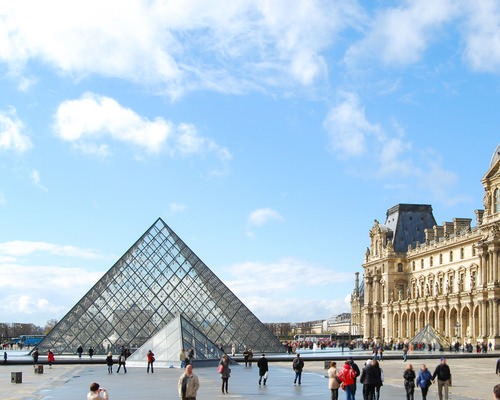18 May 2018
Museum Index: Louvre regains top spot as Paris recovers and London dips
BY Tom Anstey

France's museums have shown significant recovery following a tumultuous 2016, with the Louvre reclaiming top spot as the world's most visited museum in the latest TEA/AECOM Museum Index.
Tourist numbers in Paris and wider France suffered in 2016 in the wake of multiple terrorist attacks, with attendance at the Louvre dropping by 1.3 million visitors to 7.4 million, with the world-famous institution falling behind the top-ranked National Museum of China in Beijing and the National Air and Space Museum in Washington DC.
Reflecting the recovery of its tourism sector in 2017, the Louvre enjoyed a 9.5 per cent increase in visitor numbers, rising by 500,000 visitors to 8.1 million. Similarly, the Musee D'Orsay – which last year experienced a double digit drop in attendance to 3 million visitors – experienced significant recovery, with a 5.9 per cent increase in visitation to 3.2 million people. There were also rises in Paris for the Centre Pompidou, which increased visitation 2.2 per cent to 3.4 million, and the Cite des Sciences et de L'Industrie, which saw its numbers jump 11.7 per cent to 2.4 million visitors.
Across the channel things aren't looking so rosy, with uncertainty over Brexit and renewed security concerns affecting Britain's museums particularly in the capital, where of the five London museums that made the top 20, four suffered declines in visitation.
The highest-ranked British Museum – which came in 8th – saw its numbers drop from 6.4 million in last year's report to 5.9 million in 2017. In 9th, the Tate Modern, which last year increased its visitor numbers by 23.9 per cent, this time dropped 3.1 per cent, welcoming 5.6 million visitors through its doors. The National Gallery lost one million visitors, dropping outside of the top to to 11th spot with 5.3 million people coming to the institution. There was a 4.1 per cent decline at the Natural History Museum, which saw 4.4 million visit.
Bucking the trend in the British capital was the Victoria & Albert Museum, which following an expansion and three major exhibitions, upped its attendance by a quarter to 3.8 million, welcoming an additional 800,000 visitors through 2017.
Attendance across the top 20 museums remained relatively flat – up 0.2 per cent from 107.8 million to 180 million. Regionally, however, the report says that museums had a strong year with 5 per cent growth fed by new entries and strong performance in Asia.
Exemplified last year by the National Museum of China taking the top spot from The Louvre, Asia’s culture sector has experienced rapid growth in recent years, with 2017 being no different.
Museums in the region recorded the fastest growth worldwide in 2017, with an 11 per cent increase in visitation. Of the top 20 museums, seven were in China, the newly-opened Chengdu Museum entering the Index for the first time with 3 million visitors.
This strong performance, says the report, has been fuelled by multiple factors, including "an emerging middle class with rising levels of education, cultural awareness and disposable income, exposure to global cultural trends through online and social media, as well as increased international travel to destinations with high-quality museums".
The Museum Index, now in its sixth year, is a collaboration between the Themed Entertainment Association and the economics practice at AECOM. The Museum Index is part of the larger annual TEA/AECOM Theme Index, which tracks attractions attendance, looking at theme parks, theme park groups, waterparks and museums.
In the theme park realm, Disney continues to be the world's top dog, gaining close to 10 million additional visitors through the year. For more, click here.
For waterparks, attendance has for the first time broken 30 million visitors among the world's top 20, with particularly strong performance in some of Europe's top draws. For more, click here.
To read the full TEA/AECOM Theme Index and Museum Index click here.
Close Window